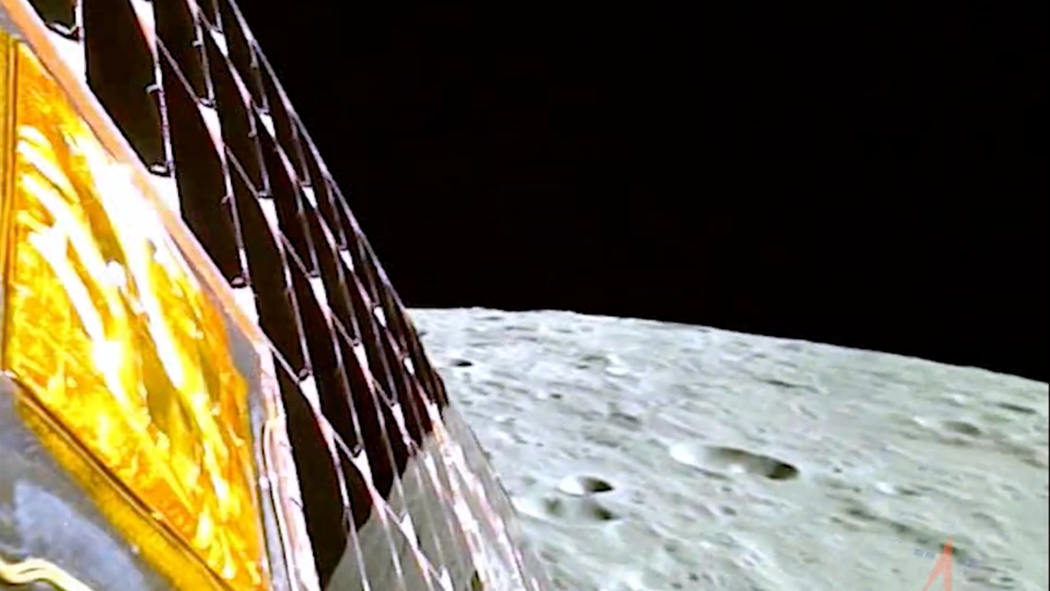India’s space agency, the Indian Space Research Organisation (ISRO) is gearing up for the launch of its lunar mission, Chandrayaan 3. This mission has the objective of landing a rover on the surface of the Moon to carry out experiments. In this blog post we will provide you with all the details, about India’s Chandrayaan 3 Moon Landing.
Over the years India’s space program has made progress since its establishment in 1962. Starting with the launch of their satellite named Aryabhata back in 1975 India has continuously advanced in space technology. The Indian Space Research Organisation (ISRO) has been leading India’s space program. Has achieved milestones through missions like Chandrayaan 1 and Chandrayaan 2. The upcoming mission, Chandrayaan 3 is another step forward for India’s space program and is expected to further strengthen their capabilities in this field.
Contents
ToggleWhat is Chandrayaan 3?
Chandrayaan 3 represents India’s lunar mission following the successful ventures of Chandrayaan 1 and Chandrayaan 2. The primary aim of this mission is to achieve a rover landing, on the Moon’s surface and conduct scientific experiments. Initially planned for a 2020 launch, technical challenges necessitated a postponement.
When will Chandrayaan-3 launch?
ISRO has yet to announce the date for the launch of Chandrayaan 3. However they have mentioned that the mission will be taking place in the future. The Satish Dhawan Space Centre, in Sriharikota Andhra Pradesh will serve as the launch site.
What are the objectives of Chandrayaan-3?
The primary goal of Chandrayaan 3 is to land a rover on the surface of the Moon and carry out scientific experiments. The rover will be equipped with instruments to examine the composition, topography and atmosphere of the lunar surface. Additionally the mission aims to investigate the presence of water resources on the Moon and search for Helium 3, an isotope that holds potential as a fuel source for fusion.
The rover will be equipped with a range of instruments, including a Laser Induced Breakdown Spectroscopy (LIBS) , a Laser Induced Fluorescence Spectroscope (LIFS) and a Synthetic Aperture Radar (SAR). These instruments will enable analysis of minerals on the lunar surface through LIBS and LIFS while SAR will provide insights into its topography.
What is the cost of Chandrayaan-3?
Estimates suggest that the Chandrayaan 3 mission will cost Rs. 610 crore ($82 million) making it cost effective compared to its predecessor Chandrayaan 2, which incurred an expenditure of around Rs. 960 crore ($130 million).
What are the challenges of the Chandrayaan-3 mission?
However there are challenges that need to be overcome in executing the Chandrayaan 3 mission, one such challenge being landing the rover safely on the Moon’s surface.
The exact location for the mission’s landing has not been decided yet. The ISRO team will need to make sure that the rover lands safely and functions on the surface of the moon. The mission will also face hurdles, like communication and power supply that need to be overcome for it to be successful.
Significance of Chandrayaan-3 for India’s space program
The upcoming Chandrayaan 3 mission holds importance for India’s space program as it will advance the country’s capabilities in space technology. It will also contribute to the community’s understanding of the Moon and its resources. The successful completion of this mission will further establish India as a leading nation in space exploration attracting collaborations in the field.
Potential impact of Chandrayaan-3 on future lunar exploration
Chandrayaan 3 has the potential to pave the way for exploration by providing valuable data on the Moon’s mineralogy, topography and exosphere. This information can be utilised for missions. Additionally the search for Helium 3 on the Moon’s surface could have implications for energy production in the future. If Chandrayaan 3 accomplishes its goals it may inspire countries to undertake their lunar missions and contribute to global efforts in exploring our celestial neighbour.
Conclusion
India’s ambitious Chandrayaan 3 Moon Landing mission aims at landing a rover on the surface and conducting extensive scientific experiments. Despite facing challenges ISROs dedicated team is working tirelessly to ensure its triumph. This mission is expected not to enhance India’s prowess in space technology but also deepen our understanding of the Moon within the scientific community. Furthermore its success could have reaching effects on lunar explorations and energy generation possibilities.
We trust that this blog article has given you all the information you require regarding India’s Chandrayaan 3 Moon Landing. Keep an eye out for updates on the mission!











